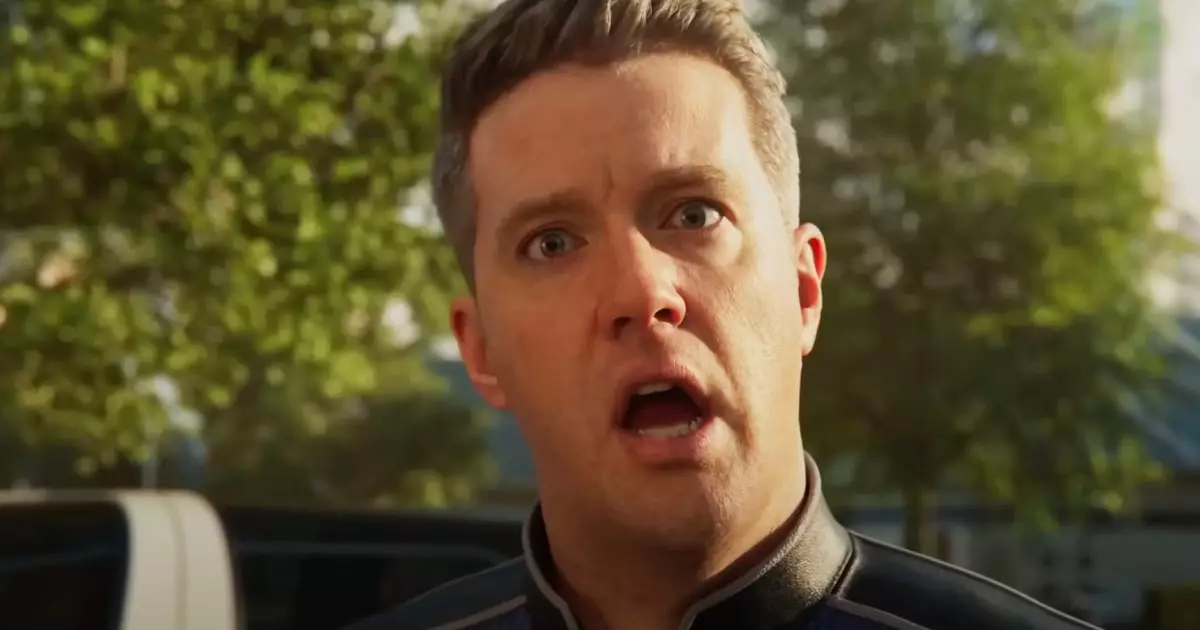Helldivers 2, developed by Arrowhead, boldly amplifies its aggressive and satirical approach in its latest update, calling players to action with a no-holds-barred mission to restore societal confidence. Unlike conventional shooters that focus solely on gameplay mechanics, Helldivers 2 integrates a layer of narrative that is both playful and pointedly critical of authority and warfare. This update acts as a mirror to modern concerns—fears of invasion, societal disillusionment, and political instability—wrapped in a chaotic universe of interstellar combat. Rather than softening the experience with standard “save the world” tropes, it embraces its satirical edge, turning military orders into biting commentary on both government propaganda and the chaos of war.
The game’s latest directive is to “murder-death millions,” a phrase that encapsulates its over-the-top, tongue-in-cheek tone. It’s less about subtle storytelling and more about immersing players into a universe where satire and action collide. This approach underscores a cynical yet playful critique of how governments handle crises—highlighting that in Helldivers’ universe, the only solution to chaos appears to be relentless violence, delivered with reckless abandon. The narrative doesn’t shy away from depicting how societal panic manifests visually—cities aflame, citizens dismembered—placing players squarely in the role of instruments of chaos meant to quell the wave of fear and destruction.
Exaggerated Orders Reflect a Hyperbolic Propaganda Campaign
The game’s new missions are framed as a propaganda push from the authority figures of Super Earth. The latest “Major Order” emphasizes an overwhelming need to eliminate specific alien threats—Shriekers, Impalers, Factory Striders, Fleshmobs, and Leviathans—numbers reaching into the tens of millions. These aren’t random targets; they symbolize an exaggerated response to societal fears, a hyperbolic depiction of war’s brutality that amplifies the absurdity of military overreach.
Arrowhead’s satirical narrative implicates the military-industrial complex, with the destruction of enemies becoming a spectacle to reassure a frightened populace. The call for mass slaughter isn’t merely gameplay; it’s a reflection of contemporary political rhetoric, echoing the way governments often respond to crises with increased violence rather than nuanced or diplomatic resolutions. The player’s role is akin to a pawn in this exaggerated chaos—an agent tasked with obliterating millions of enemies to soothe a society on the verge of collapse.
The tone suggests that the in-game conflict is less about strategic necessity and more about spectacle and societal manipulation. The graphic language and massive kill quotas parody real-world propaganda campaigns that sensationalize violence to garner support or divert attention from political failures. This layered satire challenges players to consider the thin line between entertainment and critique, making the battlefield not just a place for shooting but a commentary on militarized reactions to societal fears.
An Unexpected Reward: The Ingress-81 Cape as a symbol of player unity
Amidst the chaos and chaos-creating orders, Arrowhead offers a surprisingly thoughtful nod to its engaged community. The free Ingress-81 cape rewards players who participated in a covert ARG last May, emphasizing that even in a universe soaked in satire and destruction, community effort and collaboration are valued. This incentive speaks volumes about the game’s acknowledgment of its dedicated player base, fostering a sense of camaraderie amid the seemingly relentless violence.
The cape, a vibrant purple with patterns referencing World War II-era defcon signals, is a subtle but meaningful token. It acts as a badge of honor for players who pieced together clues and helped craft a collective narrative during the ARG. Its presence hints at how real-world themes—such as military readiness and crisis management—intersect with the game’s satirical universe, blurring lines between gameplay, storytelling, and community-building.
Arrowhead’s decision to tie the reward to an alternate reality game about a fictional invasion underscores an important perspective: even within a universe drenched in chaos, there’s room for collaboration and ingenuity. It’s a reminder that játék is not solely about destruction but also about collective storytelling and shared experiences. The cape becomes a symbol of resilience and unity—an emblem for players who, despite the brutal orders, find purpose and belonging in their virtual missions.
Final Reflections: A Provocative, yet Engaging Future for Helldivers 2
While Helldivers 2’s latest update may ruffle feathers with its unrelenting tone and exaggerated militarism, it boldly leans into its role as both a game and a social commentary. The satirical edge isn’t just entertainment; it invites players to reflect on the absurdities of modern conflict and propaganda. Its over-the-top orders and massive kill quotas strip war down to a spectacle—an unsettling parody of real-world crisis management and societal panic.
Simultaneously, the inclusion of community-centered rewards, such as the Ingress-81 cape, signals a nuanced understanding: behind every chaotic bulletstorm lies a community eager for connection and shared experiences. By blending satire with genuine engagement, Helldivers 2 carves out a unique space in the shooter genre—one where powerful commentary and exhilarating gameplay coexist. Whether players see it as a parody or a reflection of reality, it undeniably ignites conversations about war, media, and societal resilience—making the game far more than just a frenetic blast-fest.

